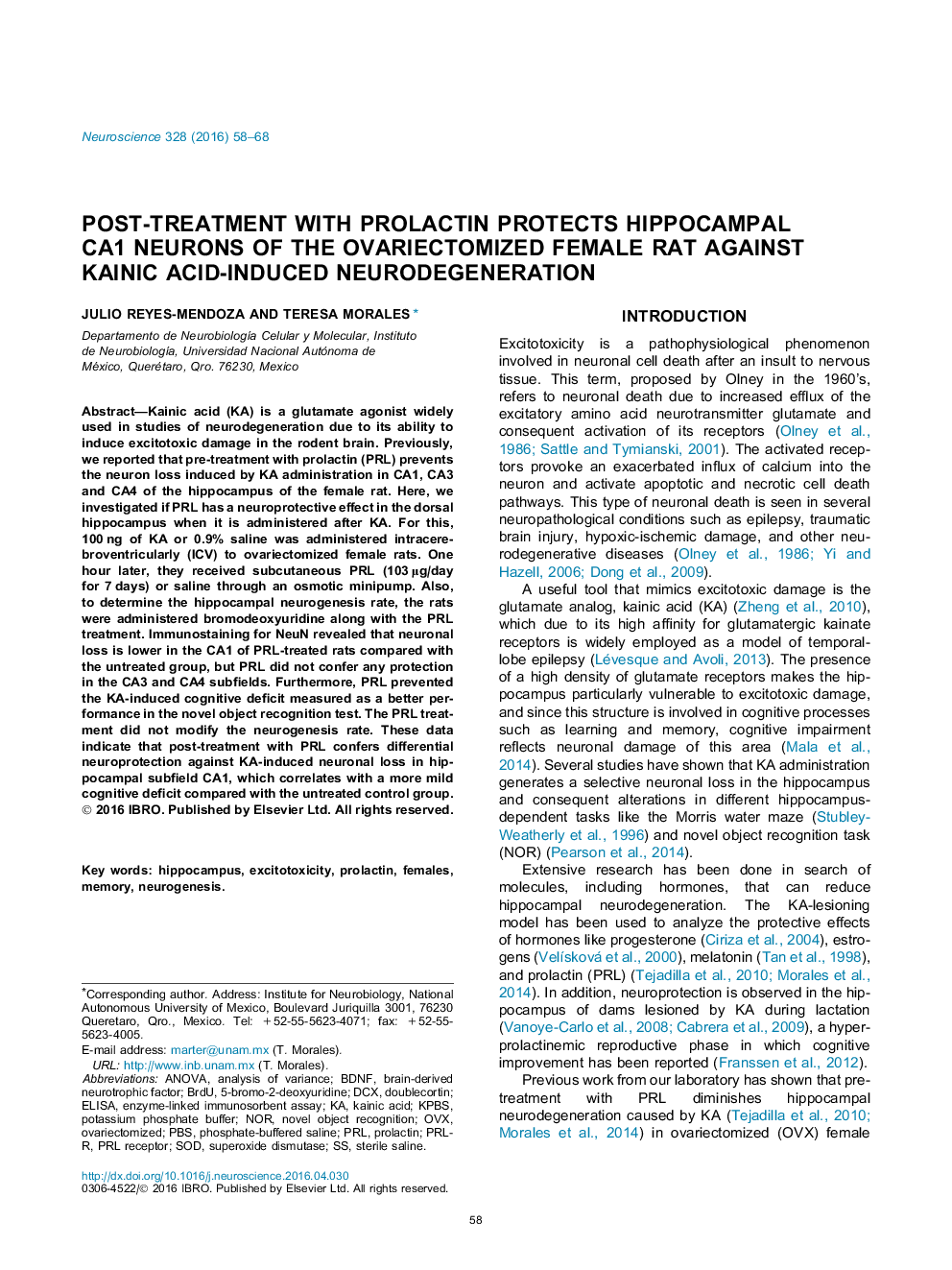| Article ID | Journal | Published Year | Pages | File Type |
|---|---|---|---|---|
| 6271119 | Neuroscience | 2016 | 11 Pages |
Abstract
Kainic acid (KA) is a glutamate agonist widely used in studies of neurodegeneration due to its ability to induce excitotoxic damage in the rodent brain. Previously, we reported that pre-treatment with prolactin (PRL) prevents the neuron loss induced by KA administration in CA1, CA3 and CA4 of the hippocampus of the female rat. Here, we investigated if PRL has a neuroprotective effect in the dorsal hippocampus when it is administered after KA. For this, 100 ng of KA or 0.9% saline was administered intracerebroventricularly (ICV) to ovariectomized female rats. One hour later, they received subcutaneous PRL (103 μg/day for 7 days) or saline through an osmotic minipump. Also, to determine the hippocampal neurogenesis rate, the rats were administered bromodeoxyuridine along with the PRL treatment. Immunostaining for NeuN revealed that neuronal loss is lower in the CA1 of PRL-treated rats compared with the untreated group, but PRL did not confer any protection in the CA3 and CA4 subfields. Furthermore, PRL prevented the KA-induced cognitive deficit measured as a better performance in the novel object recognition test. The PRL treatment did not modify the neurogenesis rate. These data indicate that post-treatment with PRL confers differential neuroprotection against KA-induced neuronal loss in hippocampal subfield CA1, which correlates with a more mild cognitive deficit compared with the untreated control group.
Keywords
NORPBSPRL-RKPBSPRLovariectomizedOVX5-bromo-2-deoxyuridineDcxBDNFkainic acidexcitotoxicitypotassium phosphate bufferBrdUanalysis of varianceANOVAEnzyme-linked immunosorbent assayELISAMemorydoublecortinFemalesSODSuperoxide dismutaseNovel object recognitionBrain-derived neurotrophic factorPhosphate-buffered salineNeurogenesisHippocampusProlactin
Related Topics
Life Sciences
Neuroscience
Neuroscience (General)
Authors
Julio Reyes-Mendoza, Teresa Morales,
